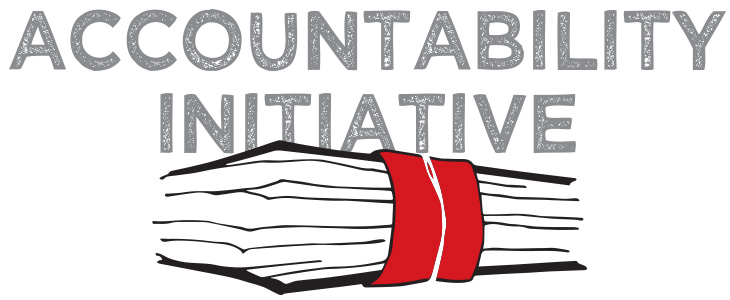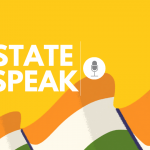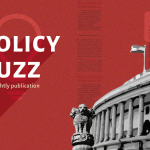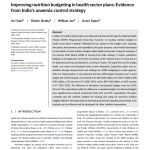
Open Government Platform – A few thoughts on it
13 April 2012
Laina Emmanuel, Accountability Initiative
On 30th March 2012, I attended the release of the Open Government Platform (OGPL) in New Delhi. Launched by Shri Kapil Sibal, Hon’ble Minister of Communications and Information Technology and Human Resource Development, GOI, this platform is a “A joint effort from India and the United States to promote transparency and greater citizen engagement by making more government data, documents, applications, tools and services publicly available” You can see the entire press release here
A little about the history of the initiative: Most of our readers would know about the ambitious, but now largely defunded open government platform Data.gov in the US. The project has inspired Open Data Sites across the world. As of now, there are 30 country-specific Open Data websites [You can explore all of them here].
To help more countries set up their own Open Data sites, the United States and the Indian Government decided to collaborate on building an easily-deployable, open-source data platform, which would combine the best features of India’s “India.gov.in” and the U.S “Data.gov”. And that is what the OGPL is all about – a template which governments can deploy. The first set of source code for this platform, built on Drupal, is now available on GitHub. (Drupal is an extremely popular platform powering millions of websites and applications on the web. Thus the OGPL is a platform built over another platform and governments can use this platform or template to quickly deploy their own site.)
There are a few points that immediately struck me, and this blog post is about those.
The Platform vs The Data: First off, I think there is a confusion that needs to be addressed. The OGPL is not that one-stop data portal India has been waiting for, where citizens can find government data-sets, documents etc. Instead it is a platform (and the word is used very specifically), which could be used for putting out data and documents, if a department chooses to deploy it. This very important distinction, I think was lost during the conference. People were mistaking the template for the actual thing. Which is why the questions at the end tended to be about when can the data be downloaded, what’s the timeline for downloading and so on?
A good way to think of this distinction would be to compare it with blogs – Every Government Department can choose to have a blog by deploying WordPress on their servers, but whether they do or not is their choice. Similarly any department can choose to make their data ‘open’ by deploying the ‘Data.gov-in-a-box or OGPL’ on their servers, but whether they do it or not is their choice.
The collaboration model: During the release, a significant amount of time was spent on showcasing the innovative model of collaboration between the US based team and the India based team who built this platform. The collaboration essentially consisted of using open source technologies and project management tools, such as Skype and Google Doc. Now, those who are coming in from an IT background, would be very non-plussed to see such trivial details being highlighted. Video conferencing, document collaboration etc are now hygiene requirements for remote collaboration in the IT industry.
However, before dismissing these as publicity gimmicks, one needs to see how bold these moves are, by comparing it with other government collaborations. I don’t have statistics on it, but my sense is that most inter-governmental collaboration goes through layers of bureaucracy and permissions. It’s in this context that using open-source and real-time tools for collaboration is revolutionary for the governance space.
And AI would certainly be in the best place to say that! Though not in the international space, we have been introducing such collaborative technologies for project management and knowledge sharing in the local governance space since November 2011. In our PAISA course, we have been teaching our governance field associates (PAISA associates) to use Facebook, Skype and SabseBolo to network and learn from each other; Google set of apps such as Google Doc, Google Calendar to manage projects and Freemind to brainstorm. Through these tools, we are slowly building a culture of peer learning and best practice sharing at the ground level. The peer learning that has started is exhilarating especially when you consider that just a few years ago, seeing what’s happening in a district and sharing it in real-time with peers sitting in another district was an insurmountable challenge. That’s when I realized that a lot of IT folks have probably lost the magical feeling they first felt when they were introduced to technologies such as Orkut, Facebook, Skype etc. They now take these technologies for granted. But working with these very technologies in the local governance space and also after seeing it being used in the OGPL, shows me that their potential has not been exhausted. A lot can still be done.
Open Source and Governments: Most of our readers would be familiar with the term ‘Open Source’. For those who are not, it implies that the source code of the software product is free for anyone to examine and tinker around. Nobody would have ever imagined that open-source would work, given that at the end of the day nobody owns the code. But the amazing part is that it does, and is now a serious challenger to the likes of Microsoft, Apple etc.
But for this radical philosophy to work, there are some conditions that need to be established and some rules that need to be followed. Eric. S. Raymond in his seminal essay “The Cathedral and the Bazaar” has very succinctly summarized some of these rules. The very first one is that “Every good work of software starts by scratching a developer’s personal itch.”
And here is where the OGPL would possibly run into troubles. The “data.gov in a box” project is trying to do two things – it’s trying to function like an open source project by posting their source code on the Internet and building a community of volunteer developers around it. On the other hand it is being driven by government bodies and individual programmers who are trying to get things off the ground and are worrying about how good it is. It’s an odd combination – developer control vs open source philosophy of ‘no control’ fighting it out! And you do see the effects of this on the level of engagement of developers on the GitHub site. As Jeff Miccolis, a senior developer at Development Seed, says in this article – “There is no history in the git repository they have on GitHub, just 1 issue in the issue tracker, nor even an explicit license in the repository.” Clearly, people don’t flock to an open-source project just because it’s open. This lesson has been learnt the hard way by a number of businesses which have tried to marry projects with open-source. A good example is the software ‘Chandler’, the troubles and life of which were documented in Scott Rosenbergs ‘Dreaming in code’. Is it going to be different for the marriage between Governments and Open-Source? Only time will tell.
But, all in all, a great start – a project which was much needed, and which seems to have done the correct thing by going open-source. The challenge going forward is getting the developer community involved. The world is waiting to see where it goes.





